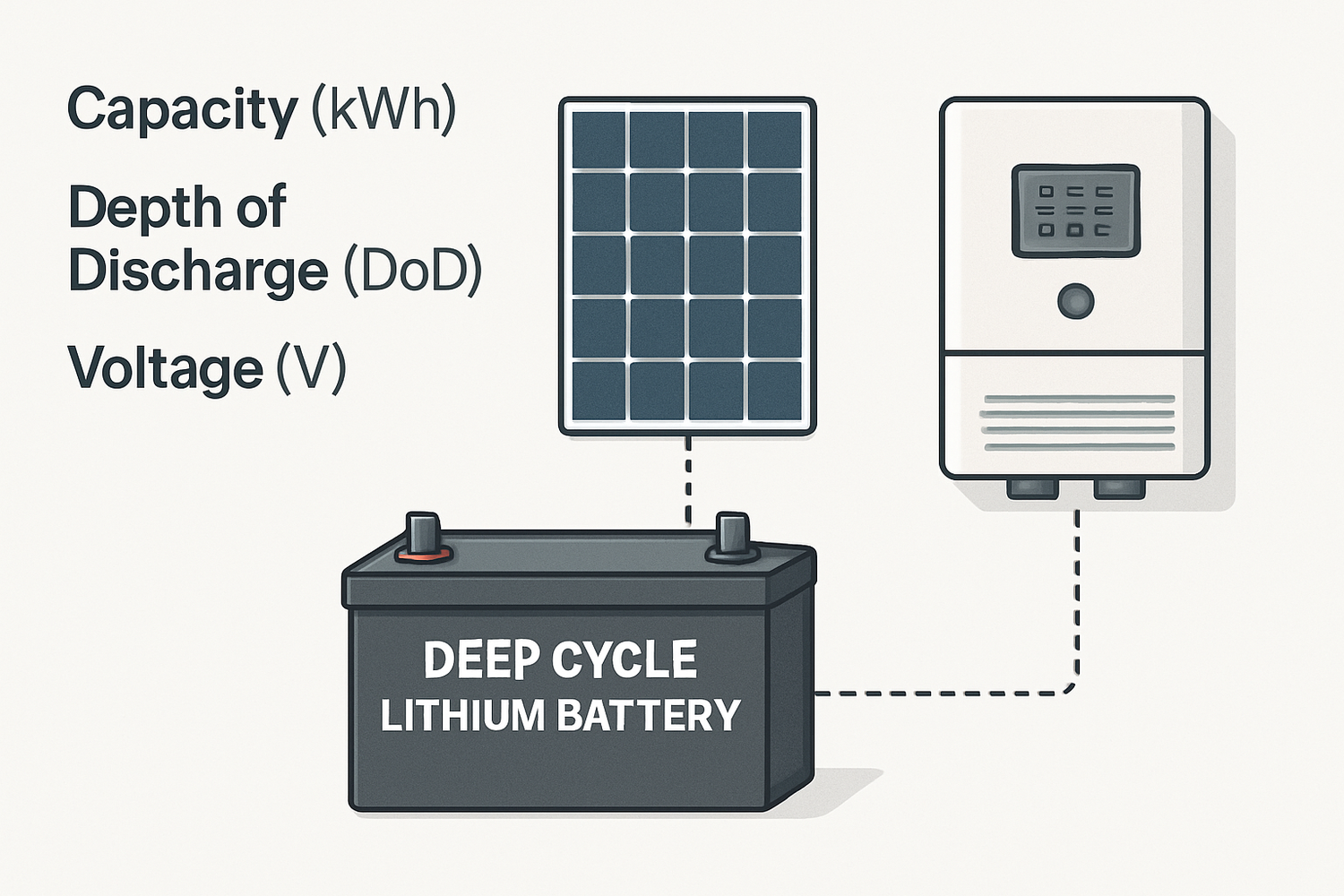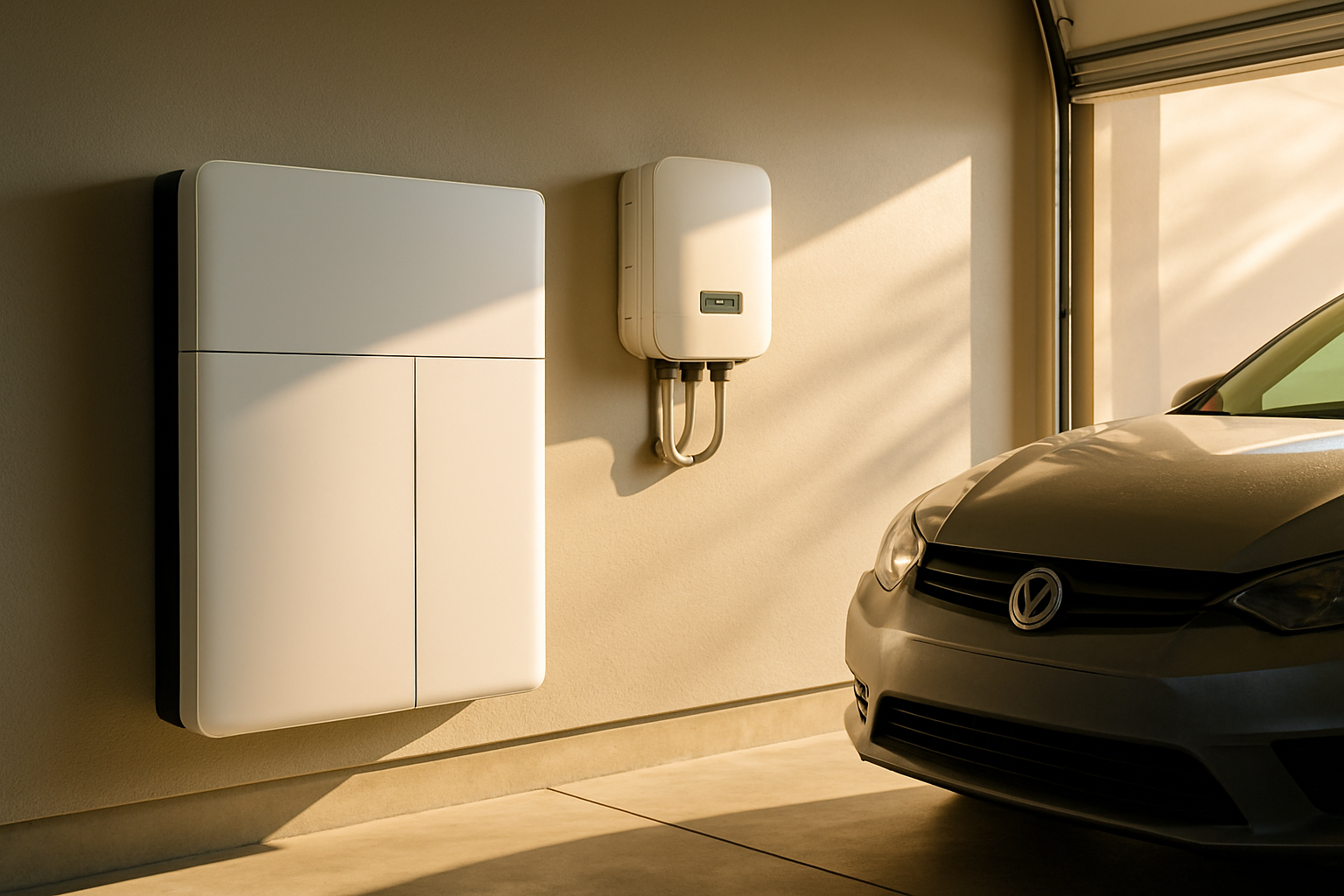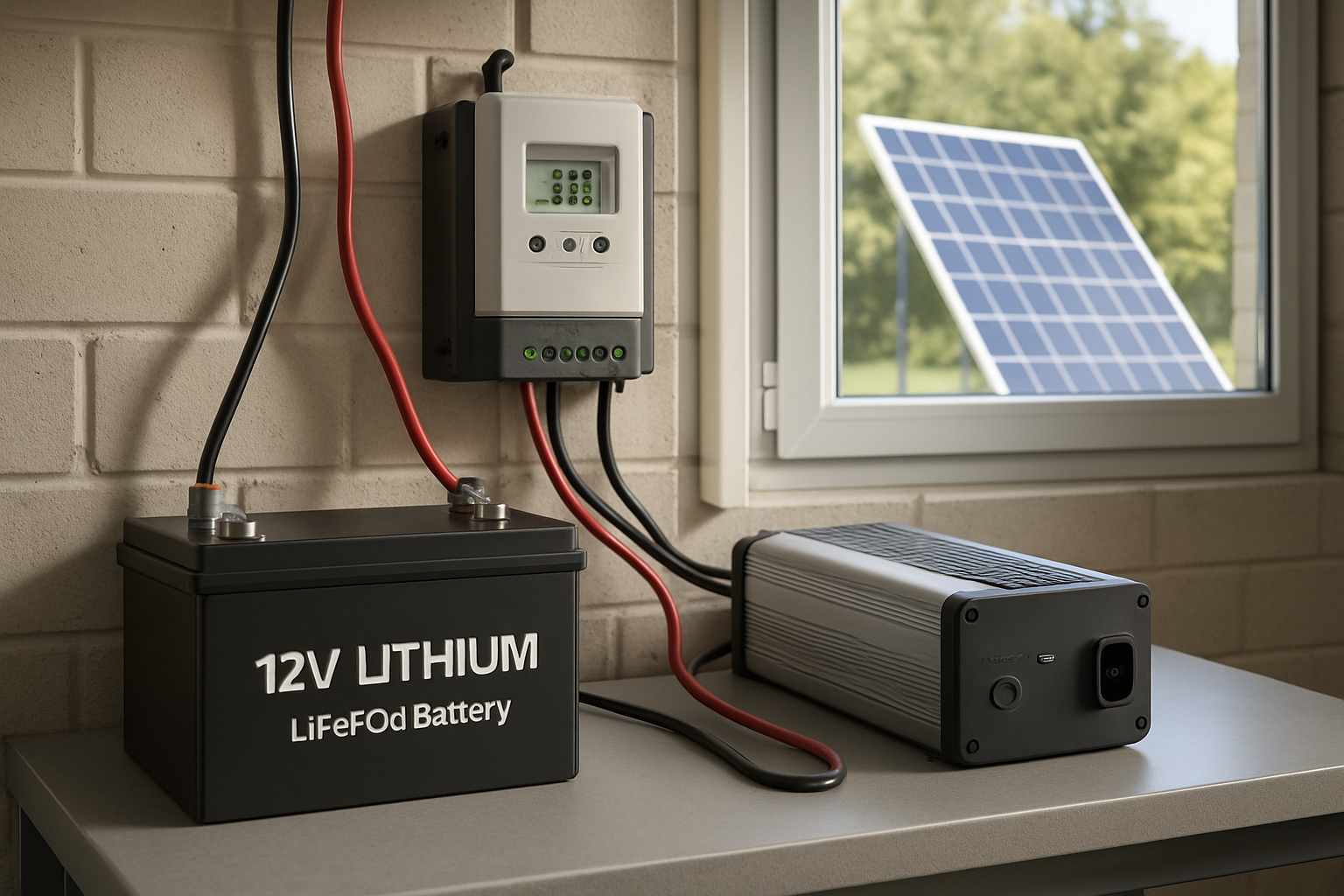Adding a battery to your existing solar system is a significant step toward energy independence. It provides backup power during outages and helps you use more of the clean energy you generate. A critical part of this solar system battery expansion is choosing the right size for your deep cycle lithium battery. A battery that is too small will leave you without power when you need it, while an oversized one is an unnecessary expense. This lithium battery sizing guide provides a clear process to determine the perfect fit for your energy needs.
Understanding Your Energy Consumption
Before you can size a battery, you must first have a precise picture of your energy usage. This initial step is the foundation of an accurate deep cycle battery calculation. It involves looking at what you use, how much you use, and when you use it.
Auditing Your Daily Appliance Usage
Start by listing every electrical appliance you intend to power with your battery system. For each device, find its power consumption in watts (W), which is usually printed on a label or in the user manual. Next, estimate the number of hours you use each appliance per day. The total daily energy for each device is its wattage multiplied by its hours of use, measured in watt-hours (Wh).
| Appliance | Power Rating (Watts) | Daily Hours of Use | Daily Energy (Watt-hours) |
|---|---|---|---|
| LED Lights (x5) | 50 W | 6 hours | 300 Wh |
| Refrigerator | 150 W | 8 hours (cycle) | 1200 Wh |
| Laptop Charger | 65 W | 5 hours | 325 Wh |
| Television | 100 W | 4 hours | 400 Wh |
| Total | 2225 Wh |
Accounting for Peak Loads
Some appliances, particularly those with motors like refrigerators or pumps, require a much higher amount of power to start up than they do to run continuously. This initial burst is known as a surge or peak load. Your system's inverter must be able to handle this peak demand, and your battery must be able to supply the necessary current. While this primarily affects inverter choice, it's an important factor in overall system design.
Planning for Days of Autonomy
Days of autonomy refers to the number of consecutive days your battery can supply power without any charge from your solar panels. This is a crucial safety net for periods of cloudy weather or grid instability. For most residential applications, planning for one to three days of autonomy provides a reliable buffer against power interruptions.
Key Technical Specifications for Battery Sizing
With your energy audit complete, the next step is to understand the technical terms that define a battery's capacity and performance. These specifications are central to any deep cycle lithium battery sizing exercise.
Battery Capacity: Kilowatt-hours (kWh) vs. Amp-hours (Ah)
Battery capacity is often expressed in two ways. Amp-hours (Ah) measure the amount of charge a battery can deliver over time. Kilowatt-hours (kWh) measure the total amount of energy a battery can store. For home energy storage, kWh is often the more useful figure, as it directly relates to your home's energy consumption (which is measured in Wh or kWh). The relationship is simple: Energy (Wh) = Charge (Ah) × Voltage (V).
Depth of Discharge (DoD)
Depth of Discharge indicates the percentage of a battery's total capacity that can be safely used. Lithium Iron Phosphate (LiFePO4) batteries stand out with a DoD of 90-100%, meaning you can use nearly all of their stored energy. This is a significant advantage over traditional lead-acid batteries, which typically have a DoD of around 50%. A higher DoD means you get more usable energy from a battery with the same rated capacity. The efficiency of the battery is a key factor in system design. As noted in an IRENA report on electrification, battery efficiency, along with the required days of autonomy and DoD, determines the total energy that must be stored.
System Voltage (12V, 24V, 48V)
When you add a battery to an existing solar system, its voltage must be compatible with your solar charge controller and inverter. Systems are typically configured at 12V, 24V, or 48V. Higher voltage systems, like 48V, are generally more efficient for larger applications because they allow for smaller, less expensive wiring and suffer lower energy loss over the same distance.
The Sizing Calculation: A Step-by-Step Process
Now, you can combine your energy needs with the battery specifications to perform the sizing calculation. This process will give you a clear target for your required battery capacity.
Step 1: Calculate Total Required Energy Storage
Use this formula to determine the total watt-hours your battery bank needs to store. This calculation accounts for your usage and the safety net of autonomy.
Required Energy (Wh) = Daily Energy Consumption (Wh) × Days of Autonomy / Depth of Discharge (DoD)
Using our example: (2225 Wh × 2 days) / 0.95 DoD = 4684 Wh.
Step 2: Convert to Amp-Hours (If Needed)
If you prefer to size your battery in amp-hours, simply divide the required energy in watt-hours by your system's voltage.
Required Capacity (Ah) = Required Energy (Wh) / System Voltage (V)
For a 48V system: 4684 Wh / 48V = 97.6 Ah. In this case, a 100Ah battery would be a suitable choice.
Step 3: Factor in System Inefficiencies
No system is 100% efficient. Energy is lost during the conversion of DC power from the battery to AC power for your appliances. It is wise to add a buffer of 10-15% to your final calculation to compensate for these losses. The performance of a solar storage system is influenced by several factors, and a comprehensive look at these solar storage performance metrics shows why LiFePO4 technology often provides superior long-term value.
Integrating with Your Existing Solar System
Correctly sizing the battery is only part of the process. You must also ensure it integrates seamlessly with your current solar setup for optimal performance and longevity.
Checking Inverter and Controller Compatibility
Your existing solar inverter and charge controller must be compatible with lithium battery chemistry. Lithium batteries require specific charging profiles (voltage and current settings) that older equipment designed for lead-acid batteries may not support. Always check the manufacturer's specifications to confirm compatibility or to determine if an equipment upgrade is necessary.
Planning for Future Expansion
Your energy needs may grow over time. Perhaps you plan to purchase an electric vehicle or add more appliances. Choosing a modular battery system allows you to easily add more storage capacity in the future. The global push towards clean energy has led to a massive increase in battery manufacturing and investment. According to the World Energy Investment 2023 report, investment in battery storage is growing rapidly, highlighting the technology's critical role in modern energy systems. Modern deep cycle lithium batteries, particularly those using LiFePO4 chemistry, rely on a specific set of materials. The demand for these minerals is growing with the expansion of clean energy technologies, as detailed in the IEA's report on The Role of Critical Minerals in Clean Energy Transitions.
A Foundation for Energy Resilience
A methodical approach to sizing your deep cycle lithium battery is the best way to ensure your energy storage investment pays off. By carefully auditing your energy consumption, understanding key technical specifications, and performing an accurate calculation, you can build a reliable and efficient system. This correct sizing is the foundation for achieving greater energy resilience and making the most of your solar power generation.
Frequently Asked Questions
Can I mix old and new lithium batteries?
It is generally not recommended to mix new and old batteries, or batteries of different capacities or chemistries. This can lead to imbalances in charging and discharging, reducing the overall performance and lifespan of the battery bank.
How does temperature affect my lithium battery's capacity?
Lithium batteries perform best in moderate temperatures. Extreme cold can temporarily reduce available capacity, while high heat can accelerate degradation and shorten the battery's lifespan. It is important to install them in a location with stable temperatures.
What is the difference between kWh and Ah?
Amp-hours (Ah) measure charge, while kilowatt-hours (kWh) measure energy. kWh is a more complete metric for energy storage because it accounts for both the charge (Ah) and the voltage (V). The formula is kWh = (Ah * V) / 1000. For sizing a home energy system, thinking in kWh is often more straightforward.





Leave a comment
All comments are moderated before being published.
This site is protected by hCaptcha and the hCaptcha Privacy Policy and Terms of Service apply.